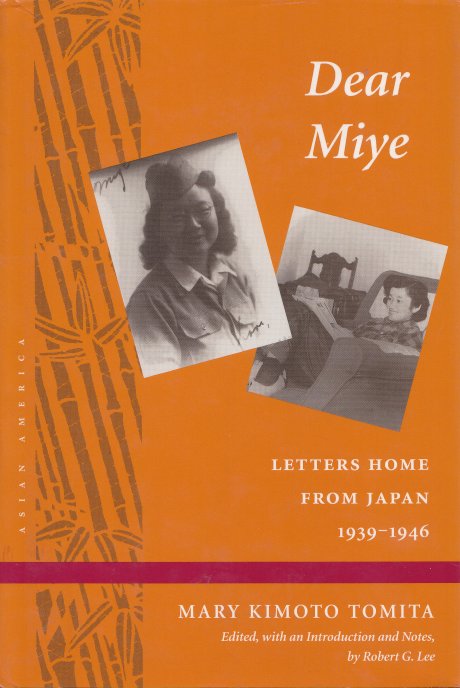
Dear Miye: Letters Home From Japan 1939-1946

One of the topics not often covered in relation to the Nisei and World War II is the Nisei who were trapped in Japan when the war started. Some were there to study, some to visit friends, some just to visit Japan, but once the war began they were stuck. Many of them did not relate that closely to Japan, and had a difficult time trying to fit in. They were followed by the secret police, subject to arrest, often had difficulty getting work, and had no idea if and when they would ever be able to return to the U.S.
Mary Tomita was one of those people. The book consists of her letters home during that time before, during, and after the war. There were around 20,000 like her that were stuck in Japan.
Since the book consists of letters, and most of that content is basic letter writing, I will only point out some of the things that I thought stood out.
She had actually been on a boat to return to the U.S. when the war broke out, and the boat turned around, taking her back to Japan. She had to register on an official document in her the village her father came from. This later caused problems about her American citizenship as it essentially made her a Japanese citizen and revoked her American citizenship, as it did for thousands of others.
She worked a variety of jobs and did manage to make some friends while she was there, but she also had a very difficult time, moving from place to place and even being at a place that was bombed.
Her family in the U.S., meanwhile, had been rounded up and put into the Amache internment camp (relocation center, whatever term you want to use.)
In mid-November of 1939 she wrote that the Japanese were beginning to feel the domestic effects of the war they had started with China back in 1931. She said that rice and other materials were becoming scarce. She also was considering that a war between Japan and the U.S. might occur.
The book is divided into pre-war, war, and post-war writings. There are a couple of times in the pre-war writings that she is very critical of the U.S., noting that “there are so many inherent evils in the American system.” She even goes to Manchura and thinks that the people there are happy under Japanese domination.
Once the war actually starts, she notes that “every time the radio announces the latest victory, they (the Japanese people) go wild.” She notes in a March 20, 1942 letter that the Japanese government had banned American films. She also writes about the Doolittle raid. As of April she's noting that “Our rations are becoming pitifully meager and I am always hungry.”
In March of 1945 she writes about how they had heard in Japan about American soldiers running their tanks over wounded Japanese soldiers, and how a GI had taken a bone from a Japanese skeleton, made a souvenir out of it, and sent it to FDR. (Both things are true.)
Right after the end of the war, she and other women were told it they should flee Tokyo because the American soldiers would do terrible things to them. She also believed that one atomic bomb could destroy the entire island of Hawaii.
The post-war writings note how the GIs generally treated the Japanese, which was fairly decently.
A rather interesting book.
Main Index
Japan main page
Japanese-American Internment Camps index page
Japan and World War II index page
|